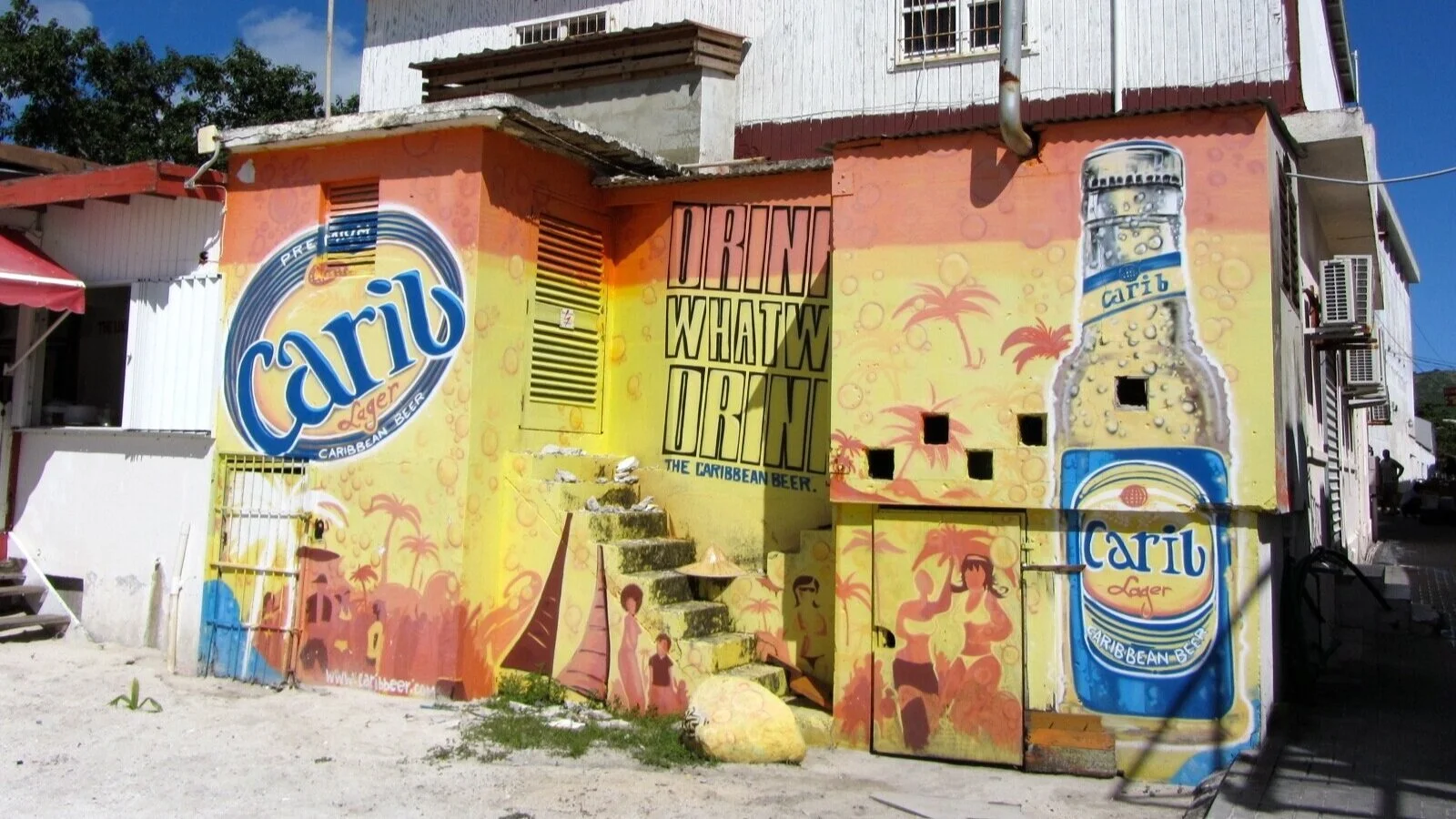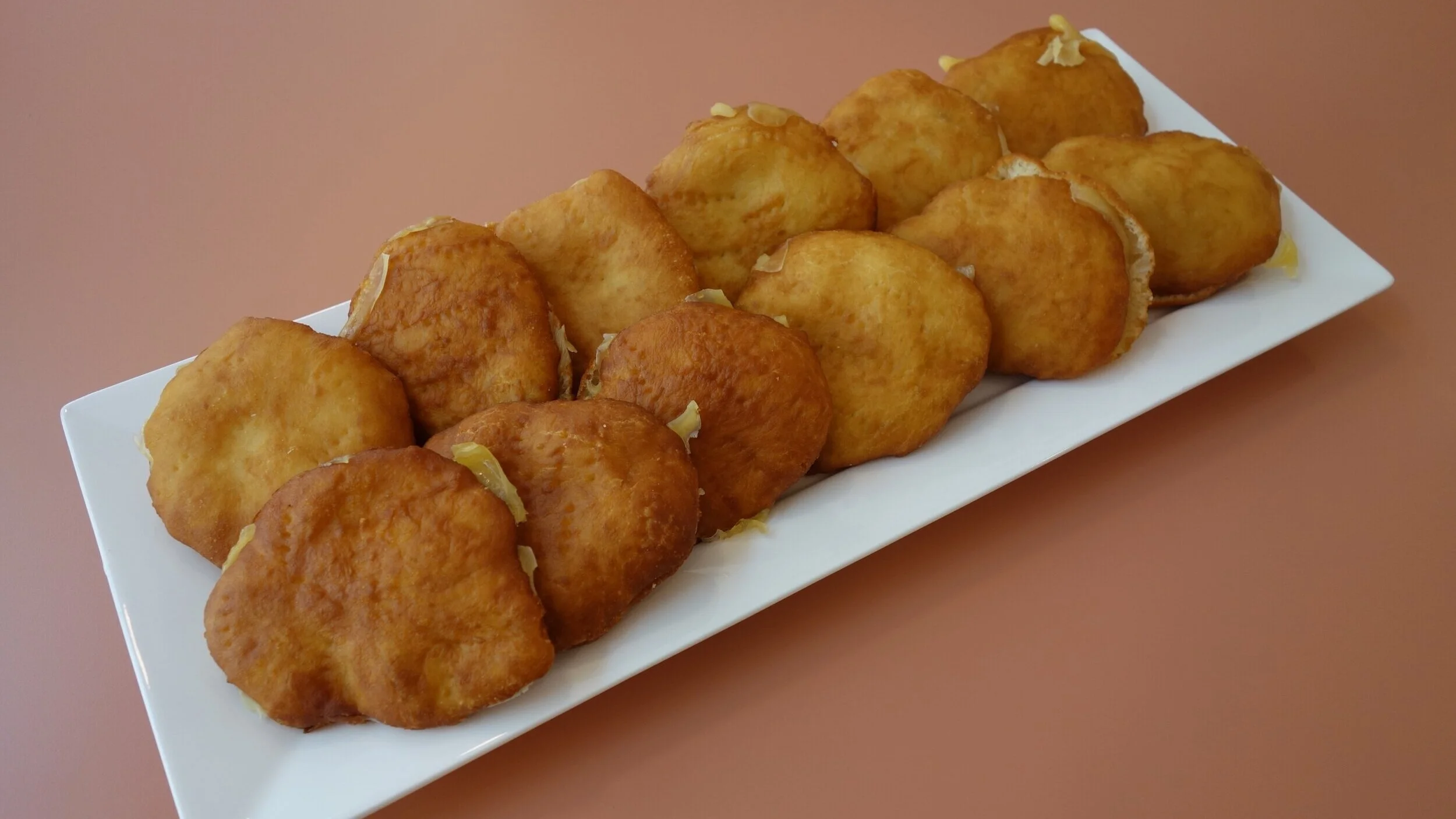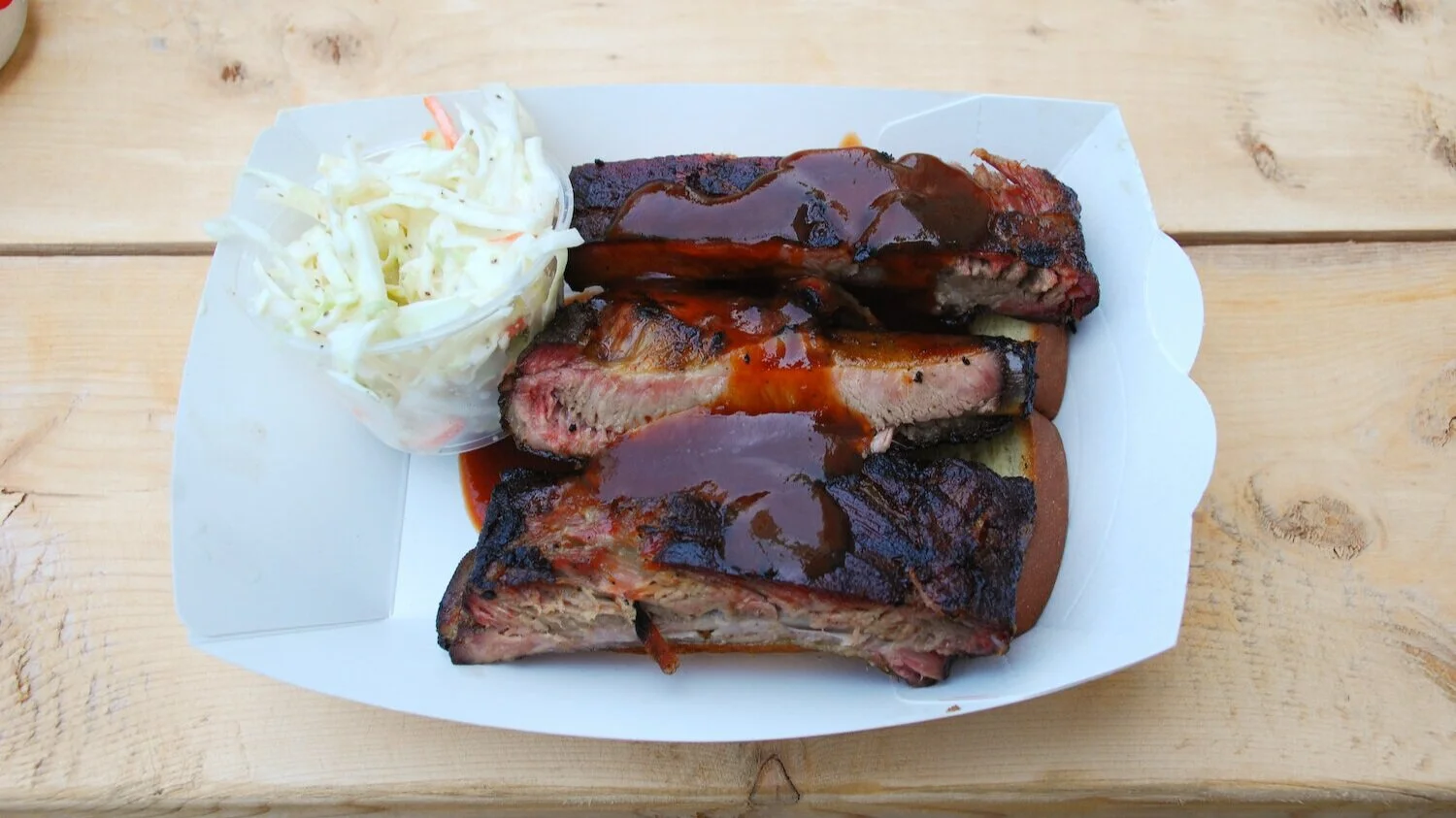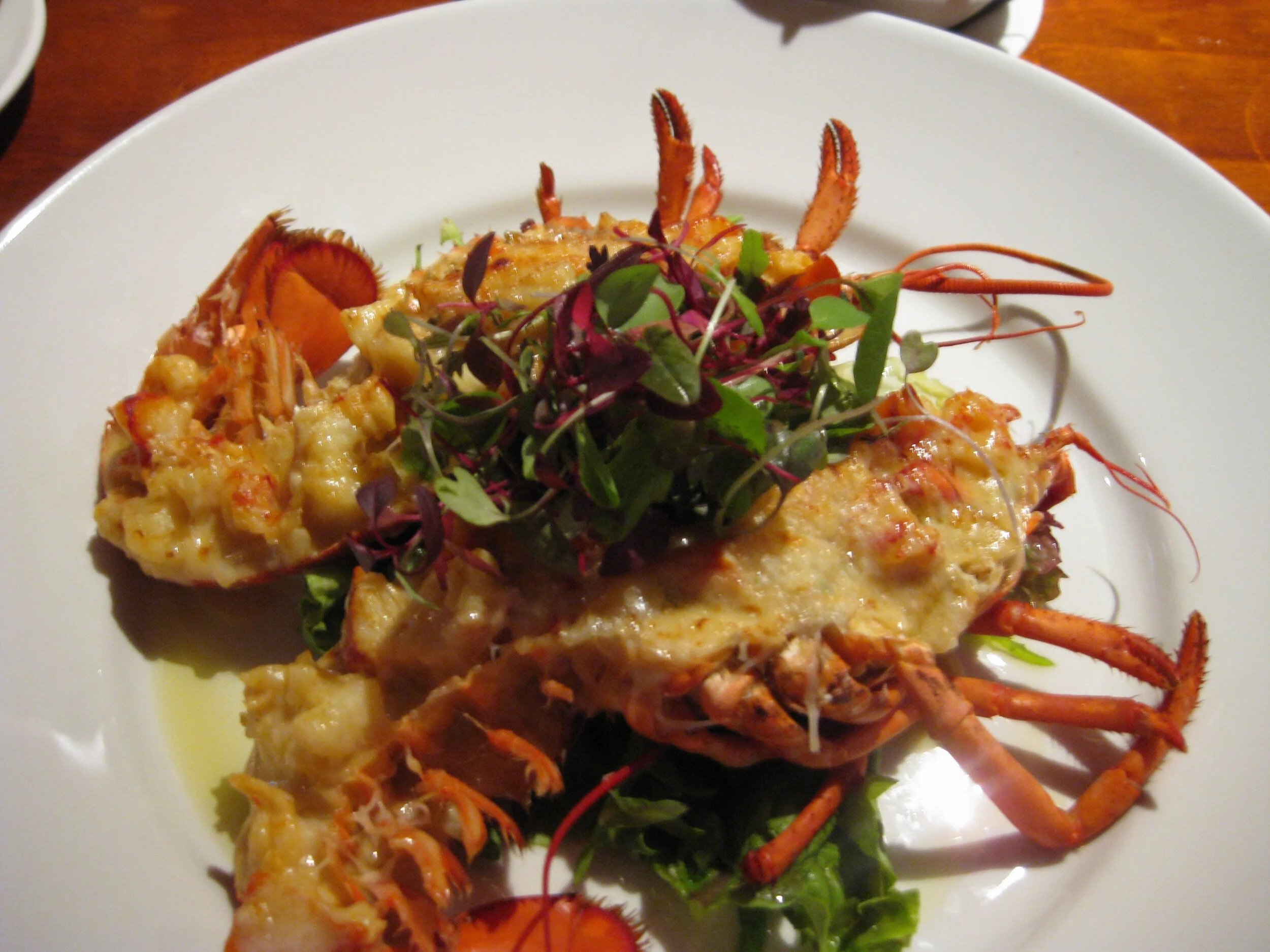Top 10 Foods: What to Eat in St. Martin
Almond Croissant
Yum. Number 10 goes to an Austrian pastry, the croissant…. but not just any croissant; it goes specifically to the almond variety.
Croissants are iconically flaky, buttery, and soft. They get their flakiness, butteriness, and poofiness from thin layers of yeast dough brushed with butter between layers.
These pastries made their start in Austria in the 13th century but became extremely popular when an Austrian baker set up shop in France. They have since become a French staple, making their way into the French-occupied island of St. Martin.
For the almond croissant, picture a plain croissant with an almond paste filling. They're sweet. The baked good is topped with shaved almonds for extra crunch and flavor and then finished with a healthy sprinkle of powdered sugar. Breakfast done right.
Carib
The number nine spot goes to an island-time brewski called Carib.
This beer is extremely popular on the island of St. Martin but is brewed in either Trinidad, St. Kitts, and Nevis, or Grenada, where the breweries are located.
Carib is a lager that's best enjoyed ice cold. It has a malty aroma and matching taste. It's slightly sweet and slightly bitter and leaves behind a sweet and malty after taste.
It's a light and crisp beer that's meant to be smooth and easy to drink. Beach day with some brewskis.
Grouper
A local fish with a large mouth and stout body, the first swimmer on our list, goes to the grouper!
This fish can be gigantic, with the largest weighing in at 880 lbs. Their diet consists of other fish, octopi, and crustaceans, which it eats whole. This fish is a beast.
Many say that grouper has a taste similar to a combination of bass and halibut, but all 400+ different species taste slightly different.
Grilled, baked, broiled, or fried are the most common you would see this fish on your plate.
Red Snapper
Number seven goes to the red snapper! This fish is native to the western Atlantic Ocean and the Caribbean Sea, especially in areas with rocky substrates. We're talking local here.
The fish's diet consists of other fish, crabs, shrimp, and tiny guys like cephalopods and zooplankton. This fish is generally caught wild, as there aren't many fisheries devoted to it anywhere.
This fish has a firmer texture and a taste that lies on the sweeter side, leaning slightly nutty. The fishy flavor is mild here and a favorite amongst a lot of children. You will most likely find this fish grilled, broiled, pan-fried, or even deep-fried.
Johnnycakes
The number six spot goes to the Caribbean johnnycake.
First made by the indigenous people of the Americas, the johnnycake can be compared to a slightly different cornmeal pancake. With different variations found along the western Atlantic and throughout the Caribbean, each region's johnnycake is somewhat different.
These non-leavened discs of deliciousness are shallow fried and mostly eaten for either breakfast or as a side dish with lunch or dinner. You can eat them any time of day, no problem.
They would follow suit with pancakes; one can top them with butter, honey, or some sort of syrup.
For lunch or dinner, one might enjoy them alongside some slow-cooked bbq or even as the bread of a sandwich!
The food's shallow fry finishes them crispy on the outside but buttery, flaky, and soft on the inside.
Conch
Indigenous to the Caribbean Sea, the Queen Conch is the subspecies of this sea snail we think of when we think St. Martin mollusk meals. The conch lives in warm shallow waters, seagrass beds, and reefs along throughout the Caribbean. Mouthfeel-wise, conchs have a texture similar to clams but tougher and slightly sweeter. Nonetheless, they are used interchangeably in many recipes. Here, conch chowder and conch fritters are this sea creature's claim to fame.
Let's talk sustainability. Since the conch grows at a very slow pace, they are highly susceptible to over-fishing. This is so severe that the American state, Florida, has made it illegal to harvest them. As a result, populations are on the decline. This might be an unpopular suggestion, but we recommend limiting consumption to one conch dish per visit.
The oceans will thank you.
Guavaberry Colada
The number three spot goes to the extremely St. Martin frozen drink, the guavaberry colada.
Until researching this beverage, I didn't think there was a difference between guava and guavaberry, but there is. Guavas are two-to-four-inch round fruits with red or white flesh, a unique flavor, and an aroma that's synonymous with island-inspired candle fragrances. Guavaberrys, on the other hand, are tiny, about half the size of a cherry with a similar pit inside. They can be dark red or purple or various degrees of yellow-orange. Guavaberries are sweeter than guava but have a similar tanginess.
These berries are used to make guavaberry liqueur on the island. This liqueur is incredibly popular for both visiting tourists and locals on special occasions. This liqueur is the national liqueur of St. Martin.
Now, the guavaberry colada is a riff on your classic pina colada. The cocktail replaces the pina's rum with guavaberry liqueur. This results in a pinkish-red frozen concoction that's sweet, coconuty, pineappley, and guavaberry'y. This will handsdown reinforce your moment in paradise.Rum
Island life, relaxation, and just the right amount of tiki. Rum sets the mood proper.
This spirit is made by fermenting and distilling sugarcane juice or molasses and can be found in a spectrum of different grades, ages, and types. The three most common are:
White Rum: clear in color with a mild flavor that will get along with most other mixers. Think the vodka of the rum world, the most versatile.
Gold Rum: White rum that's been aged in barrels takes on a new golden color and develops a noticeably more intense flavor. If you want to boost the rum flavor in a cocktail without getting too funky, gold rum is your guy.
Dark Rum: This type of rum is exceptionally vague; the only qualifier and differentiator from white and gold rum is the color. As long as it's darker in color, you can call it a dark rum, whether it falls in the golden/amber color category or the nearly black category. They do have to be aged in barrels to obtain this color, though. If you're looking for a more intense rum flavor, dark rums are usually a good bet, but there is a chance that a specific dark rum has the same intensity as a golden rum but always more than a white rum.
So when thinking about the flavor of rums, think of different degrees of toasted sugar and funk.
Some common rum cocktails that one might encounter are pina coladas, mai tais, and rum punch.
Topper's Rhum is distilled on the island and is worth the try. They have different options ranging from white rum to flavored rum. Flavored rum is rum that's been infused with other flavors (spices, coconut, banana).
You will also see a lot of rum liqueurs by Old Man Guavaberry Brand. Try them all. Island almond and guavaberry are my two personal flavored favorites from their lineup.
Ribs
Second place goes to barbecue spare ribs!
When visiting Saint Martin, it is almost guaranteed that you will smell them before you even have the chance to sink your teeth in. Driving around the island, you are bound to pass local “lolos.” These slow-cook, out-in-the-open roadside barbecues were among the most mentioned places to get food on the island. Think local, family recipes.
Although you can find ribs prepared a few different ways, the most common dressing would be a delicious, sweet, savory, spicy bbq sauce.
Spiny Lobster
The spiny lobster takes the number one spot! This crustacean is pretty abundant in the Gulf of Mexico and the Caribbean Sea.
If we compare the spiny lobster to its New England relative, we will notice many differences. The spiny lobster looks different; these guys don't have those iconic Maine lobster claws. They have two long spiny antennae and are just overall a little scarier looking.
The spiny lobster also has a milder sweetness and a firmer texture than the Maine lobster. Since the "spiny" doesn't have those iconic lobster claws or knuckles, you will find most of its meat in the tail.
Enjoy your spiny lobster simply grilled, or if you're feeling a little more sophisticated, enjoy them with a plate called lobster thermidor.
Lobster thermidor gets its popularity on the island from its French roots. The lobster is split halfway down the middle, and the meat is removed. The guts are gutted, and the beef is cooed in a rich wine sauce just to be stuffed back in the lobster shell for a beautiful low-waste presentation. This sauce now, is made with egg yolks and brandy. The lobster is then put back in the oven to melt and brown a healthy sprinkling of gruyere cheese on top.











